You may be familiar with the term probiotic, which means “for life” (pro = for and biotic = relating to life). Alas, fermented foods are alive.
Fermented foods, such as a ginger bug, not only preserve nutrients, but break them down into more digestible forms. They’re rich in lactobacilli, the health-enhancing probiotics like those found in yogurt, which promote the growth of healthy flora in the intestine and aid with digestion and the absorption of nutrients. In addition to good digestion, a healthy gut is important for a strong immune system and one’s physical and emotional well-being.
Unfortunately, most commercially available fermented foods have been pasteurized, which kills all the good microorganisms and their healthful benefits. So, best to ferment foods at home yourself.
Fermenting food may seem a bit daunting at first, but it’s actually easy and fun. The microorganisms essentially do all the work. You just need to sit there and wait patiently while the microorganisms do their thing.
Ginger bug is any easy, inexpensive first step into the world of fermented probiotic drinks.
What exactly is a ginger bug??
A ginger bug is a wild, lacto-fermented starter that relies on naturally occurring yeasts and bacteria found in the air and on the skins of fruits, vegetables and roots to kick off the fermentation process. Lacto-fermentation is an anaerobic process (that is, without oxygen), by which friendly bacteria (lactobacillus) and yeast break down sugar to form lactic acid. Similar to a sourdough starter, the ginger bug traps wild yeast and beneficial microorganisms, which in turn break down sugar into lactic acid and carbon dioxide, yielding a bubbly probiotic mixture.
The production of carbon dioxide creates the fizz or effervescence in the finished ginger bug beer or ‘soda.’ Alcohol is also a byproduct of the lacto-fermentation process, but don’t worry, the ginger bug isn’t fermented long enough to produce anything beyond negligible/trace amounts of alcohol. You might expect a ginger bug beverage to be overly sweet given the addition of sugar over several days, but it’s surprisingly not. Remember, the sugar is for the bacteria, not for you.
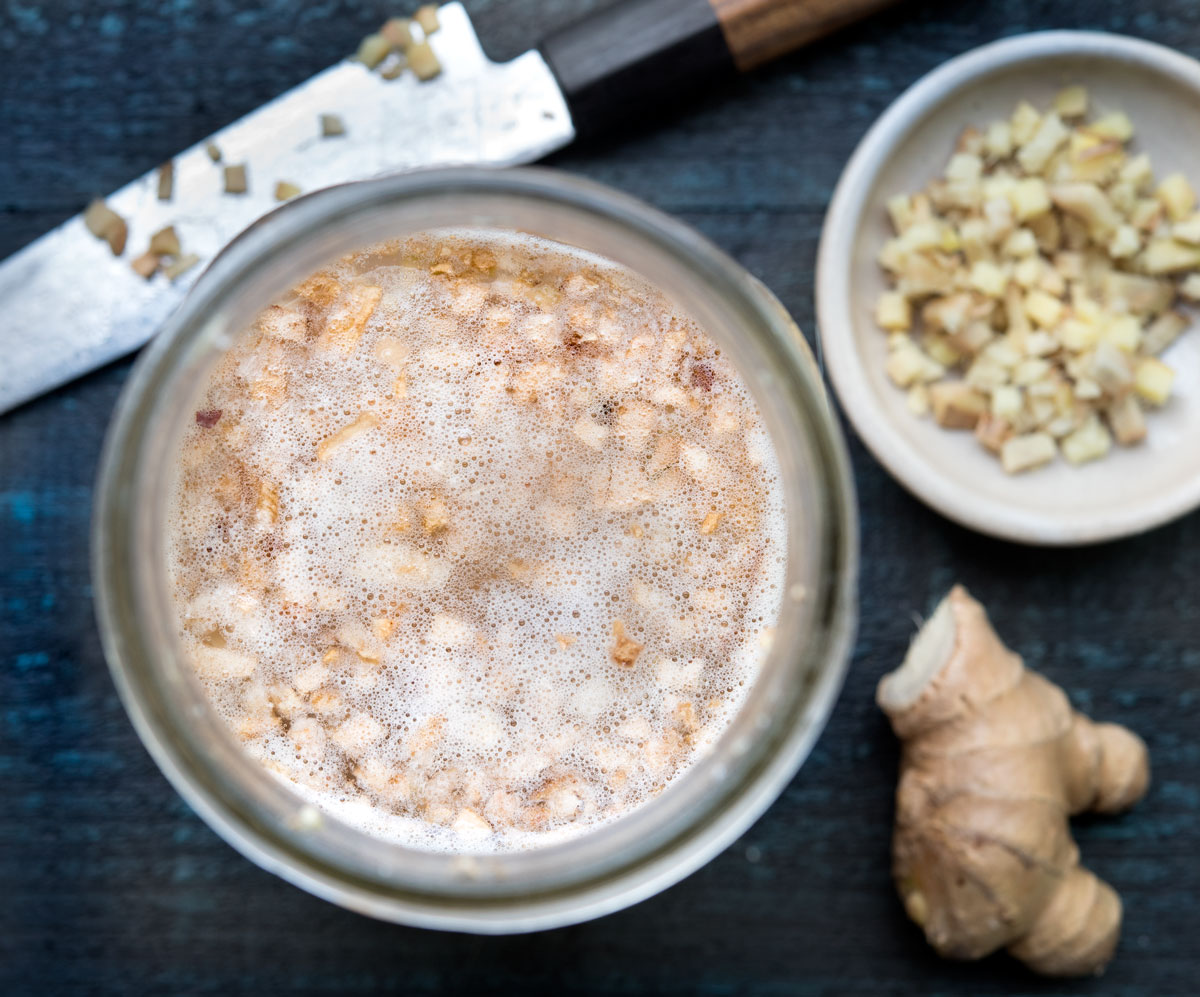
There are two stages to making a ginger bug probiotic beverage:
First, you must make the ginger bug starter, which requires combining: 1) organic ginger root — skins and all, as the skins harbor beneficial yeasts for the fermentation process, 2) raw, unrefined sugar, and 3) non-chlorinated water, as chlorine kills bacteria. After a couple of days, your bug will become lively and bubbly (as pictured above).
Then, when the ginger bug is nice and active, you can use a portion of it to make your probiotic beverage — ginger bug ‘soda’ and/or ginger or root beer…
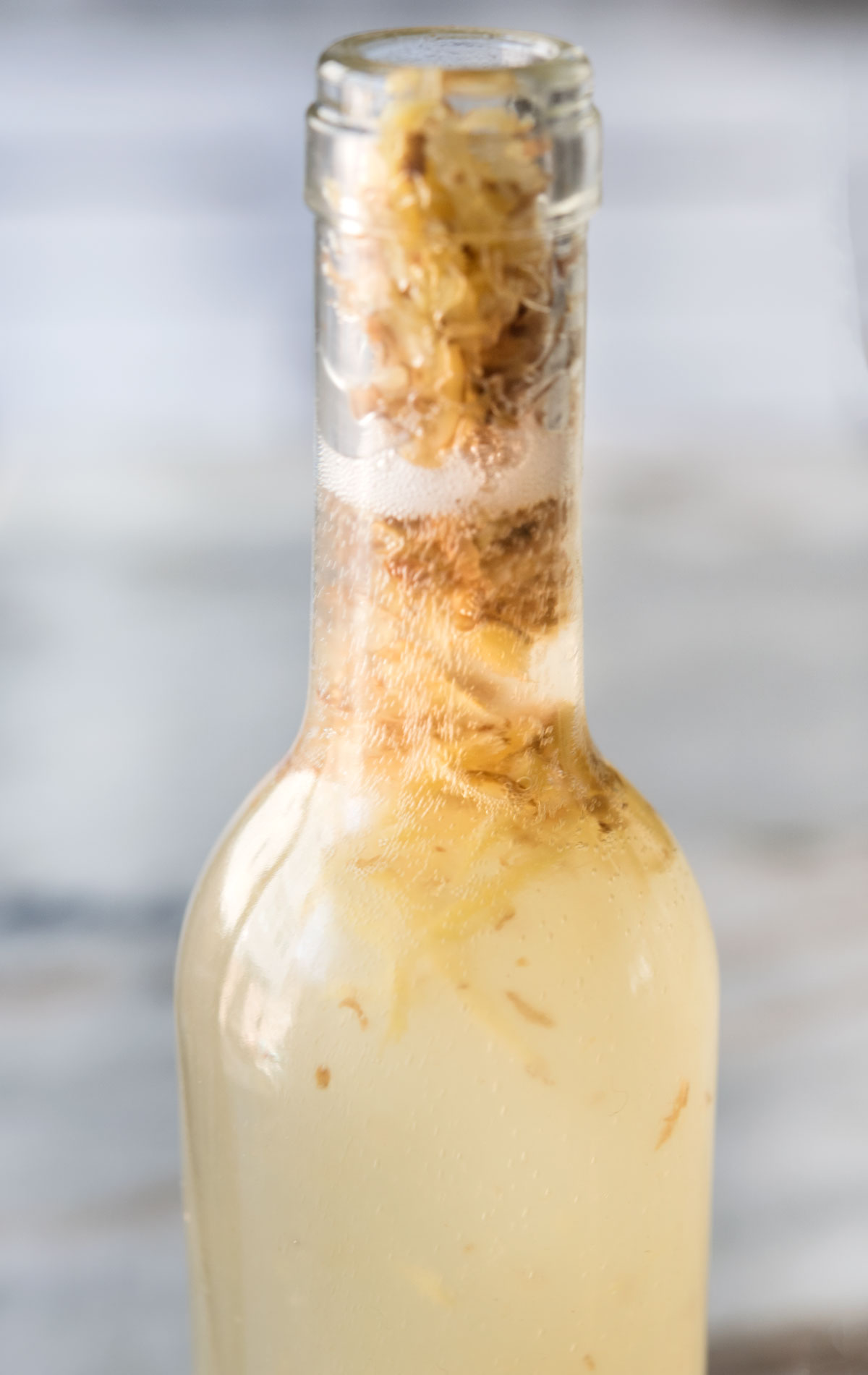
You can make a simple ginger bug ‘soda’by mixing a portion of the strained ginger bug (reserving the rest for future use) with your favorite fruit juice — anything from freshly squeezed orange juice, blood orange juice, cranberry juice, pomegranate juice or even pineapple juice, to sweetened teas. Just bottle it and let it ferment. Or, you can make ginger beer by boiling ginger root and sugar and adding it to your bug. Also, you can make root beer by boiling traditional medicinal roots such as sarsaparilla, licorice and juniper berry. Quite different from what passes as root beer today, which is comprised primarily of sugar and artificial ingredients.
Once your fermented drink is bottled, it takes anywhere from 12 to 72 hours, depending on the temperature, for it to build up carbonation and get fizzy. At first, it may look like nothing is happening, but carbonation will start to build up inside the bottles. Just be sure to ‘burp’ your bottles daily by opening them up to release any pressure that’s built up inside and then sealing them up again. Otherwise you risk the chance of the bottles exploding. One time, I bottled mine in glass bottles with wine corks. I forgot to release the carbonation, and a day or two later, the corks popped and splattered juice everywhere.
Happy Fermentation!
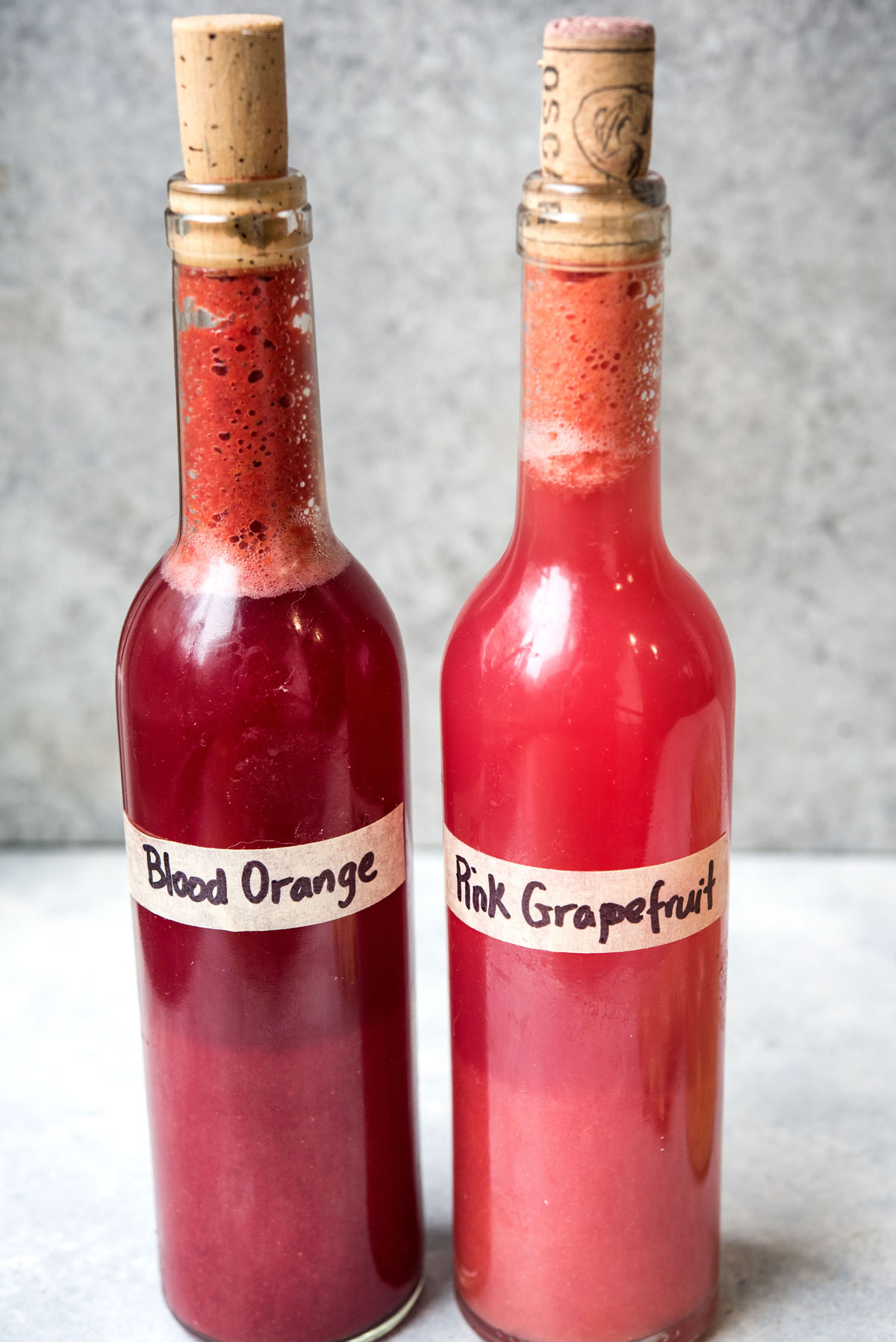
Ginger Bug
Large chunk of ginger, unpeeled, finely chopped
Unrefined/raw cane sugar
2 cups of unchlorinated, filtered water
Mix 2 tablespoons chopped ginger, 2 tablespoons sugar and 2 cups water in a glass mason jar. Stir to combine. Cover with cheesecloth or coffee filter, and secure with a rubber band.
Each day, for the next 5 to 8 days, stir in 1 additional tablespoon of chopped ginger and 1 tablespoon sugar. Continue until you see active bubbles forming and the liquid becomes cloudy. At this point the ginger bug is ready to use.
Note: You can store your active ginger bug in the refrigerator when not using. Once per week, take the ginger bug out of the refrigerator and feed it 1 tablespoon chopped ginger and 1 tablespoon sugar. Return to the refrigerator. Repeat.
Ginger Bug Soda
1/4 cup ginger bug liquid
1 quart (4 cups) fruit juice and/or sweetened tea
To make the Ginger Bug ‘Soda’: Strain 1/4 cup of the ginger bug liquid. Combine the liquid with your favorite fruit juice or sweetened tea. Transfer to flip top bottles with lids and allow to ferment up to 3 days at room temperature or until effervescent. ‘Burp’ your bottles daily by opening them up to release any pressure that’s built up inside the bottles and then sealing them up again. Transfer to the refrigerator and chill before consuming.
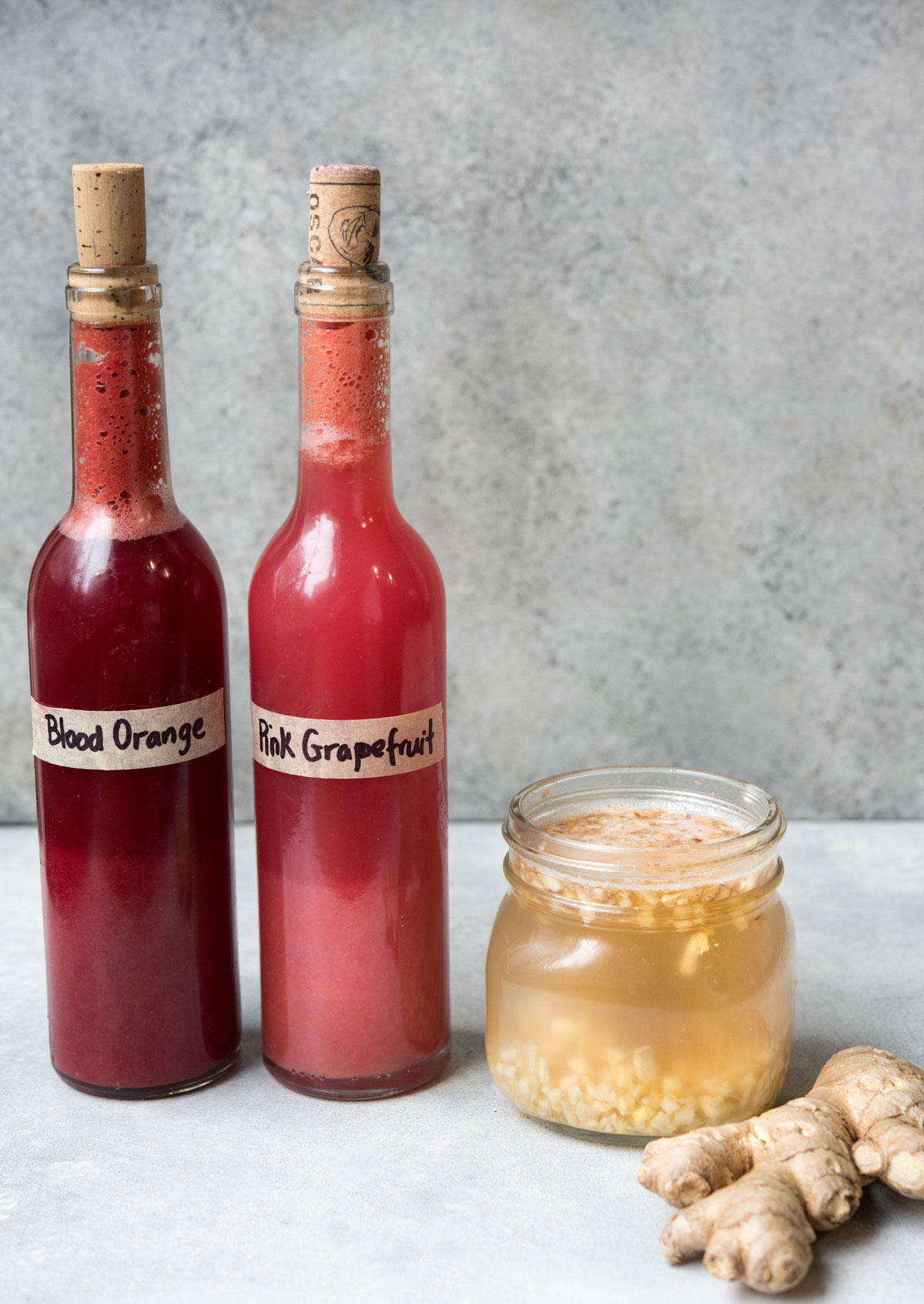

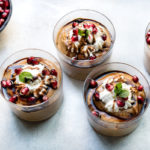
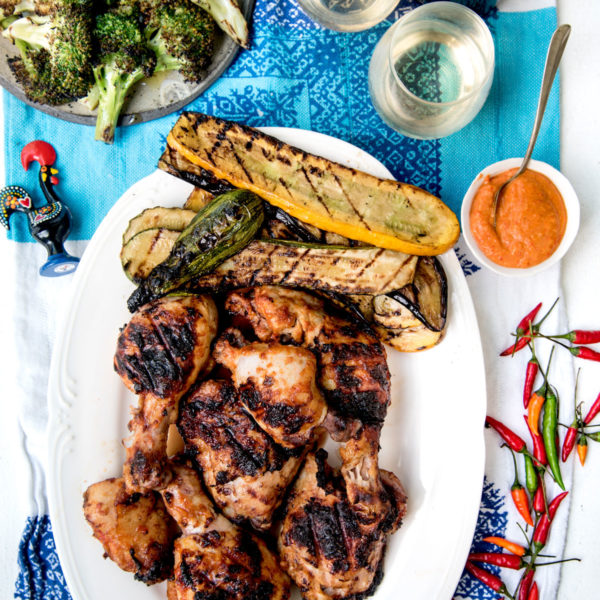




3 comments
Jesse-Gabriel
Hallo.
Sie haben einen großartigen Blog auch wenn ich seid 25 Jahren vegan lebe liebe ich ihre Rezepte!
Viele liebe Grüße sendet ihnen
Jesse-Gabriel aus Berlin Deutschland
Sarah Goible
I am so grateful to your very well thought out explanation. I have to share your post on my blog! I love me some ginger bug and would love to highlight your amazing recipe and description of this amazing drink. Love me some ginger bug.